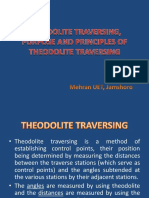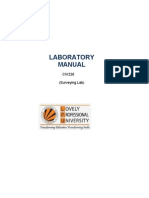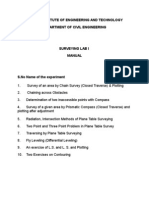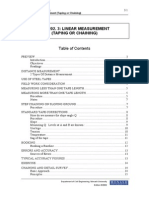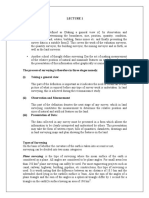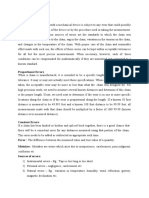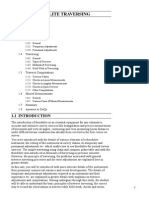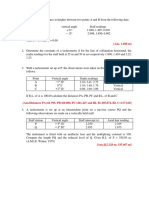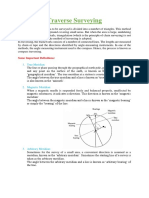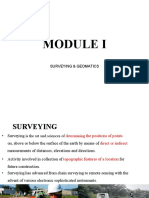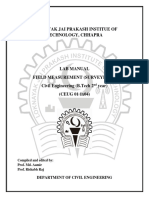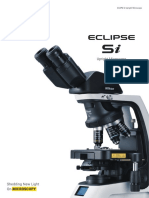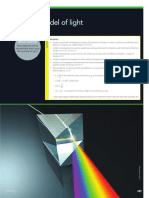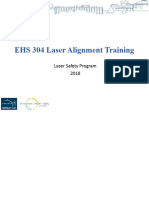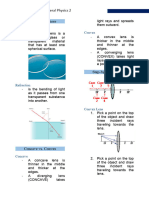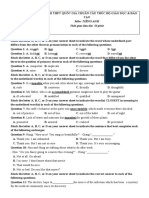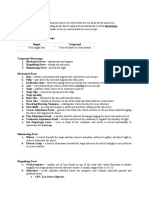1.
Definition and uses of levelling
What Is Leveling?
Levelling can be defined in several approaches which are interdependent each other:
Leveling is a branch of surveying in civil engineering to measure levels of different
points with respect to a fixed point such as elevation of a building, height of one point
from ground etc.
As per Wikipedia Levelling or leveling is defined as a branch of surveying, the object
of which is to establish or verify or measure the height of specified points relative to a
datum. It is widely used in cartography to measure geodetic height, and in construction
to measure height differences of construction artefacts.
Levelling is a process of determining the height of one level relative to another. It is
used in surveying to establish the elevation of a point relative to a datum, or to establish
a point at a given elevation relative to a datum.
Advantages of levelling (land levelling)
Effective land leveling reduces the work in crop establishment and crop management,
and increases the yield and quality. Landleveling increases yield to a large extend
because it improves weed control. Improved water coverage from better
land leveling reduces weeds by up to 40%.
What are advantages of Levelling?
In summary, the main benefits of levelling are:
improved crop establishment,
even water coverage of the field,
even crop stand and maturation,
reduction of weeds by up to 40 % (thereby a 75 % decrease of labour required for
weeding),
increase of farming area by 5-7 %,
reduction of farm operation times by 10-15 %
1. Types of levelling instrument parts of level
1
� The equipment used in the levelling process comprises optical levels and graduated
staffs are the basic ones. Among the optical levels Dumpy level, Tilting Level and
Automatic level
a. Dumpy level
Dump Level Instrument:-
The dumpy level is an optical instrument used for surveying and levelling operations. It
comprises of a telescope tube, firmly held between two collars and adjusting screws.
The complete instrument is staged by the vertical spindle. The telescope placed on the
dumpy level can be rotated amongst the horizontal plane. Relative elevation of survey
points on the land can be determined through the dumpy level.
The dumpy level was invented by Willian Gravatt, in 1832. Being a civil engineer, he
invented the dumpy level while using Y (Wye) level instrument.
Principle of Dumpy Level Instrument:
The dumpy level operates on the principle by establishing a visual relationship between
two or more points, through an inbuilt telescope and a bubble level. The desirable level
of accuracy can be achieved through steps.
It is also called through various names such as Surveyors levels, Builders level, Dumpy
level or even its pre-historic version “Y(Wye) Level”.
Accuracy of Dumpy level over other levelling instruments:
The prime reason for using Dumpy level over other levelling instruments is its
accuracy.
A dumpy level is known for high accuracy values for most of the Tacheometric
methods. The accuracy of a dumpy level can be within 1:4000 for every 100 m.
Use of Dumpy level in Surveying:
Dumpy level holds significant importance in the surveying of a construction site. The
level of accuracy and handiness of dumpy level has made it a prominent choice
amongst surveyors.
The prime reason for performing levelling on a construction site is to make the field
level and even.
To determine the differences in height between two points.
To measure the height and distance of different locations of surveying land through the
principle of relativity.
To measure following distance amongst various point on the surveying land.
Setting out levels and inclined surfaces for construction.
To draw contours on land.
Important Components of Dumpy level:
Telescope:- The telescope is used to measure distant objects in the line of sight.
Bubble Tubes. They are provided to align thelevel of instrument.
2
� Compass.
Vertical Spindle.
Tribrach.
Foot Screws.
Levelling Head
Tripod.
Components of Dumpy level
Telescope:-
The telescope is used to measure distant objects in the line of sight. The telescope is
generally connected with vertical spindle, facilitating telescope to be movable in
3
� variousdirections.
Telescope comprises of various parts, all the parts are described below.
Eye Piece: It comprises of a magnifying glass and is primarily used by the observer.
Objective Piece: it is placed at the farther end of eyepiece. It comprises a convex lens
and a concave lens.
Diaphragm: Provided in the outline of the eyepiece with the cross of dark metal. They
are provided to bisect object.
Focusing Screw: They are meant to align the focus and image clarity of the object.
Ray Shade: Prevents sunlight from entering the objective lens.
2. Bubble Tubes
They are provided to align the level of instrument. Provided by bubble tubes on
horizontal and vertical direction. The instrument is ready to survey when both the
bubbles are in the centre.
Bubble Tubes
3. Compass
It is used to determine the magnetic bearing of the line of the path of the survey. The
compass comprises of pointer on marking of directions. The compass is aligned for the
magnetic bearing in the north direction.
4. Vertical Spindle
Located at the centre of the instrument. It helps the telescope to rotate in the vertical
direction. Vertical Spindle is meant to be a conjunction point between tripod and
telescope.
5. Tribrach
It is parallel to the levelling head and primarily utilised to adjust the horizontal level of
the instrument. The trivet is connected through foot screws.
4
� Tri brach
6. Foot Screws
The foot screws are used to calibrate the instrument through the bubble tube. Adjusting
foot screws one can calibrate tribrach plate. To ensure the bubble is at the centre, foot
screws are operated.
7. Levelling Head
Also known as a trivet, it comprises of two triangular plates aligned parallel to each
other. Comprises of groves to hold foot screws.
8. Tripod
Tripod is the supporting medium of the complete dumpy level. Comprising of three
legs made of hollow steel sections or light or hardwood. Steel shoes provided at the
foot ensures that the tripod is immobile with slight jerks.
Tripod
5
�b. Tilting Level
Figure below shows the telescope of the tilting level pivoted at the centre of the
tribrach; an attachment plate with three footscrews. The footscrews are used to centre
the circular bubble, thereby setting the telescope approximately in a horizontal plane.
After the telescope has been focused on the staff, the line of sight is set more precisely
to the horizontal using the highly sensitive tubular bubble and the tilting screw that
raises or lowers one end of the telescope. The double concave internal focusing lens is
moved along the telescope tube by its focusing screw until the image of the staff is
brought into focus on the cross-hairs. The Ramsden eyepiece, with a magnification of
about 35 diameters, is then used to view the image in the plane of the cross-hairs.
Components of the Tilting level
c. Automatic Levels
Automatic laser levels, or self-leveling levels, have become a much more common
optical instrument on construction sites. These levels are replacing alternatives, such as
builder's levels, because they are easier to use and quicker to set up. Automatic laser
levels remain level and accurate no matter how much the ground vibrates, how much
the temperature changes, and how unsteady the operator handles it.
Instead of having the traditional graduated leveling vials like the transit level or
builder's level, automatic laser levels have a circular level. The circular level, or bulls-
eye level, is mounted on the automatic level and is centered to facilitate the leveling.
Once the bubble in the circular level is centered, a compensator takes over and
maintains a true level line of sight. This provides a very convenient set up; once the
instrument is level, no further leveling is required at the location.
6
� Parts of an Automatic Laser Level
Automatic laser levels are useful in many different situations.
Verifying elevations of foundations, footings and walls.
Structural framework.
Establishing proper drainage for structures.
Determining the correct elevation for floors.
Establishing the height of doors and windows.
Developing suspended ceilings.
3. Types of Levelling Staff used in Surveying and their uses
Levelling staffs is a straight rectangular rod having graduations, the foot of the staff
representing zero reading. The purpose of a level in to establish a horizontal line of
sight. The purpose of the levelling staff is to determine the amount by which the station
is above or below the line of sight.
Levelling staffs are made of wood, metal or glass fibre and graduated in metres and
centimetres. The alternate metre lengths are usually shown in black and red on a white
background. The majority of staffs are telescopic or socketed in three or four sections
for easy carrying.
7
�The following three types of self reading staffs are available: (a) Solid staff: It is a
single piece of 3 m. (b) Folding staff: A staff of two pieces each of 2 m which can be
folded one over the other. (c) Telescopic staff: A staff of 3 pieces with upper one solid
and lower two hollow.
4. Setting up level and using levelling devices and Care of Equipment
Adjustment of Equipment
In order to obtain consistent results from your survey instruments they must be kept in
good adjustment.
Care of Equipment
If the equipment you use is to function as it is intended, you must take proper care of it.
All survey equipment used for horizontal and vertical control msut be checked against a
standard.
When setting up the instrument, the leveling screws should never be tightened more
than is required to eliminate looseness. If you have to exert a great deal of force to
8
� loosen the screws, they were too tight. Never leave the instrument unattended when not
in use. Never set an instrument behind a vehicle. If it is to be left near a vehicle, set it in
view where the driver can easily see it.
Make sure the level is secured to the tripod before picking it up. When carrying the
level through brush or trees or into a confined area, it should be carried under the arm
with the head in a forward position where it can be seen.
When the level is being carried on the tripod, the telescope axis should be tight enough
to prevent movement by force of gravity, but loose enough to permit movement if the
instrument is accidentally bumped. When transporting the instrument in the rig, the
head should be removed from the tripod and carried in its case.
Total stations and theodolites should never be carried on the tripod. They should be
boxed up for all moves. Total stations and theodolites transported in their boxes should
have all motions free. When the tripod is not in use, the cap should be fastened snugly.
The threads on the tripod head should be kept clean. The graphite from a black stake
pencil makes a good lubricant for the threads on the tripod and the instrument. Use a
dry lubricant if available, not oil or grease which will trap grit and result in unnecessary
wear on the threads.
5. Types of levelling
Based on the observation points and instrument positions direct leveling is divided into
different types as follows:
a) Simple leveling.
b) Differential leveling.
c) Profile leveling.
d) Reciprocal leveling.
e) Longitudinal and Cross sectional Levelling
a. Simple Leveling
It is a simple and basic form of leveling in which the leveling instrument is placed
between the points which elevation is to be find. Leveling rods are placed at that points
and sighted them through leveling instrument. It is performed only when the points are
nearer to each other without any obstacles. It is the most commonly used method of
leveling. In this method, measurements are observed directly from leveling instrument.
One set up of level. To find the elevation of points when the difference of level between
two points is determined by setting the leveling instrument between the points, the
process is called simple leveling.
9
� Simple Leveling
b. Differential levelling
Differential levelling or spirit levelling is the most accurate simple direct method of
determining the difference of level between two points using an instrument known as
level with a levelling staff. Differential leveling is performed when the distance
between two points is more. In this process, number of inter stations are located and
instrument is shifted to each station and observed the elevation of inter station points. It
is carried out with the object of determining the reduced level of point some distance
apart or to establish benchmarks. Finally difference between original two points is
determined. The process has already been described in continuous or compound
levelling and is also known as running flying levels from one point to the other.
10
�From the figure shown above, it is found that
(i) if SB < SA, the point B is higher than point A.
(ii) if SB > SA, the point B is lower than point A.
(iii) to determine the difference of level, the elevation of ground point at which the
level is set up, is not required.
c. Profile levelling
Profile levelling or sectioning is levelling done across a line along the centre line of the
road to gate stage of the profile.
It uses to determine the elevations of a series of points lengthwise along a
highway. Profile leveling is generally adopted to find elevation of points along a line
such as for road, rails or rivers etc. In this case, readings of intermediate stations are
taken and reduced level of each station is found. From this cross section of the
alignment is drawn.
Profile levelling
d. Reciprocal levelling
When it is not possible to locate the leveling instrument in between the inter visible
points, reciprocal leveling is performed. This case appears in case of ponds or rivers
etc. in case of reciprocal leveling, instrument is set nearer to 1 st station and sighted
towards 2nd station.
It is done when the distance is long and it is not possible to balance the lands of the line
of the sites. For example in the case of point lining on either side of the river, when it is
not possible to maintain the level between the points. The principle of reciprocal
leveling is instruments is kept an equal distance from the back and forward staff station,
the difference in elevation of the to the station is equal to the difference of staff reading.
11
� Reciprocal levelling
e. Longitudinal and Cross levelling
Longitudinal levelling
The object of this leveling operation is to obtain a record of the undulations of the
ground surface along the centerline of proposed engineering projects such as road,
railway, and canal.
Cross levelling
The purpose of cross-sectioning is to determine the necessary information regarding the
levels of the ground on either side of the longitudinal section for computing the
quantities of earthwork. In cross section levelling, one can determine
the elevations of points on a succession of lines running at right angles to the
lengthwise line of the highway. In cross-section leveling, you determine the elevations
of points on a succession of lines running at right angles to the lengthwise line of the
highway. The cross-section lines are established at regular stations, at any plus stations,
and at intermediate breaks in the ground.
12













